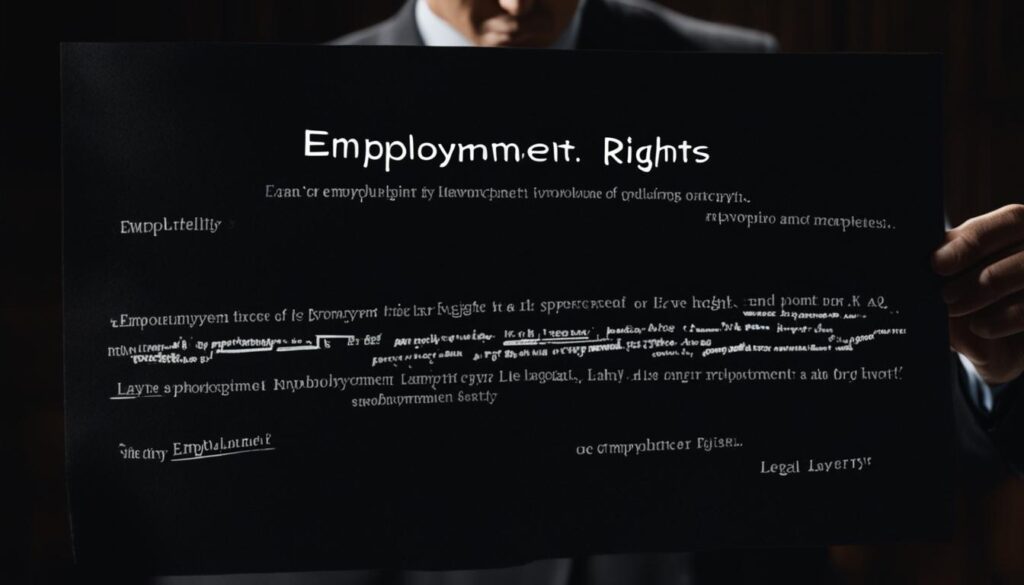If you’re a small business owner looking to hire new employees, the PPP loan can provide you with the financial assistance you need. The Paycheck Protection Program (PPP) is a government initiative designed to support businesses during the pandemic by providing loans that can be used for various expenses, including payroll costs. With this loan, you can not only sustain your existing workforce but also recruit and hire new talent to help your business grow.
Recruiting and hiring employees amidst uncertain times can be challenging, but with the help of PPP funds, you can confidently move forward with your hiring plans. The loan provides a valuable source of pandemic relief funding, allowing you to expand your workforce and boost your business’s productivity and resilience.
Whether you need to rebuild your team after laying off employees or want to expand your workforce to meet growing demand, the PPP loan offers government assistance that can make it possible. By utilizing the loan effectively, you can rejuvenate your business and contribute to the broader economic recovery.
Key Takeaways:
- The PPP loan provides small businesses with the opportunity to hire new employees and recover from the impacts of the pandemic.
- By utilizing the loan effectively, you can secure forgiveness on your payroll costs and ensure growth and stability for your workforce.
- Recruiting and hiring new employees can help your business adapt to changing market conditions and position for long-term success.
- The PPP loan can be used to rehire employees who were previously laid off, reinstating your workforce and qualifying for full forgiveness on payroll costs.
- Take advantage of the PPP loan to invest in your business’s future and contribute to the overall economic recovery.
How to Hire Back Employees with PPP Funds
If you had to lay off employees due to the pandemic, the Payroll Protection Program (PPP) offers a lifeline to rehire your workforce. Here’s a step-by-step guide on how to utilize PPP funds to bring back your employees and ensure loan forgiveness.
- Make a written offer in good faith: Begin the rehiring process by drafting a detailed offer letter outlining the terms of employment including the same salary or wage, working hours, and conditions as before. This demonstrates your commitment to rehiring employees using the PPP funds.
- Document employee rejections: If an employee refuses your offer to rehire, it is crucial to keep a record of their rejection. Document the communication and any additional evidence that supports the employee’s decision not to return to work, such as emails or text messages. This documentation will be necessary to justify the forgiveness of payroll costs.
- Qualify for exemptions: There are cases where employees may not need to be rehired to meet forgiveness requirements. For instance, if an employee was fired for cause, voluntarily resigned, or requested a reduction in hours, you may be exempt from rehiring them. Ensure you have the necessary documentation to support the exemption.
- Report rehire rejections: It is essential to report any employee rejections of rehire offers to your state’s labor or unemployment office. This reporting requirement helps prevent potential abuse of unemployment benefits and ensures transparency in the rehiring process.
By following these guidelines, you can navigate the hiring process with PPP funds successfully. Remember to maintain proper documentation throughout the process to secure loan forgiveness and safeguard your business.
Rehiring Employees Collecting Unemployment Benefits
PPP funds are intended to incentivize employers to rehire employees who were previously laid off. It is important to note that employees should not refuse work solely because their unemployment benefits are higher. By law, if an employee refuses to return to work after a good-faith offer to rehire, the forgiveness amount of your PPP loan will not be impacted as long as you maintain proper documentation.
Employers have the right to report suspected Employment Insurance (EI) fraud. If you suspect any fraudulent activity, it is advisable to report it promptly to the appropriate authorities. This helps ensure the integrity of the program and protects the interests of both employers and eligible workers.
Employees who are collecting unemployment benefits are required to report their income to the state’s Department of Labor. In some cases, employees who refuse a suitable job offer may be asked to return a portion or all of the unemployment benefits they received during the period they were collecting them.
It is important to understand that rehiring employees who are collecting unemployment benefits can significantly benefit both your business and the employee. By bringing back these employees, you can effectively utilize the PPP funds, maintain a skilled workforce, and contribute to the economic recovery of your community.
Remember, documentation is key. Keep a record of any attempts made to rehire employees, including written offer letters and any correspondence regarding the rejection of the rehire offer. This documentation will serve as evidence to support your forgiveness application and protect your business in case of any future audits or inquiries.
By understanding the provisions and requirements surrounding rehiring employees who are collecting unemployment benefits, you can make informed decisions that benefit both your business and your workforce. Utilize the PPP funds wisely, follow the guidelines, and help contribute to the economic recovery during these challenging times.
Converting Contractors to Employees with PPP Funds
If you have contractors working for your business, you have the opportunity to convert them into employees using PPP funds. This can provide you with additional flexibility and control over your workforce while maximizing the benefits of the loan.
However, it’s important to consider the impact on your payroll costs and loan forgiveness. Contractors were not on your payroll records pre-COVID, which means you may not have allocated sufficient funds for paying new employees. This can limit the amount available for loan forgiveness.
Despite this, the forgiveness guidance does not prohibit hiring new employees using PPP funds. However, it’s essential to ensure that you spend at least 60% of the loan on eligible payroll costs to maximize your chances of loan forgiveness.
By converting contractors to employees, you can establish a more stable workforce and potentially qualify for full loan forgiveness on payroll costs, provided you meet the necessary criteria and maintain compliance with program guidelines.

Consider the following when converting contractors to employees:
- Assess the financial impact on payroll costs: Calculate the funds required to hire contractors as employees and the potential impact on your loan forgiveness amount.
- Review eligibility criteria: Ensure that the individuals you plan to convert meet the eligibility criteria for employees, including meeting the necessary documentation and employment requirements.
- Document the conversion process: Maintain proper records of the conversion process, including written agreements, documentation of the change in employment status, and any additional agreements or contracts.
- Consult legal and tax professionals: Seek guidance from legal and tax professionals to ensure compliance with labor laws, tax regulations, and other relevant obligations.
Converting contractors to employees can be a strategic move to align your workforce with your long-term goals. However, it’s crucial to carefully evaluate the financial implications and follow the necessary steps to ensure compliance and maximize your chances of receiving forgiveness on your PPP loan.
Rehiring Employees vs. Hiring New Employees
When it comes to utilizing your PPP loan funds, you have the flexibility to make decisions that best align with the needs of your business. While rehiring employees can be a beneficial strategy, it is important to understand that the Small Business Administration (SBA) forgives loans based on maintaining headcount and salary levels, rather than requiring the rehiring of the same individuals.
If you encounter challenges in rehiring former employees or they choose not to return to work, you have the option to hire new employees to meet your headcount numbers. The SBA provides leniency in these cases, acknowledging that workforce dynamics may have changed during these unprecedented times.
By considering both rehiring and hiring new employees, you can ensure that your business maintains the necessary workforce to meet operational demands while also maximizing PPP loan forgiveness. Remember, the key focus should be on maintaining overall headcount numbers and salary levels, rather than strictly rehiring the same individuals.
Throughout the hiring process, it is crucial to document your efforts and keep accurate records to demonstrate good faith in your decision-making. This can include job postings, interview notes, and offers made to both former employees and new candidates. By maintaining thorough documentation, you can protect yourself and your business in case of any future audits or inquiries.
The decision to rehire employees or hire new ones depends on various factors, such as employee availability, business needs, and the current economic environment. Ultimately, the goal is to optimize the use of your PPP loan funds to support your workforce and drive the recovery of your business.
Restructuring Compensation and Bonuses with PPP Funds
When it comes to using PPP funds to restructure compensation and provide bonuses, there are a few important considerations. While the official guidance does not specifically address compensation restructuring, it is generally recommended to keep employees’ compensation the same as before. This means ensuring that they receive at least 75% of their base salary or wage during the covered period to maintain full forgiveness on your payroll costs.
However, if employees are paid less than 75% of their base salary or wage during the covered period, your forgiveness amount may be reduced. There are some exemptions for this requirement, so it’s crucial to consult with legal and tax advisors to understand if your situation qualifies for an exception.
Additionally, bonuses, including hazard pay and commissions, are eligible for forgiveness as long as they are within certain limits. These limits may vary, so it’s important to review the specific guidelines and regulations to ensure compliance with the PPP loan forgiveness program.
To further clarify the information on compensation restructuring and bonuses with PPP funds, here are the key points:
- It is recommended to maintain employees’ compensation at the same level as before.
- Employees should receive at least 75% of their base salary or wage during the covered period to avoid a reduction in forgiveness amount.
- Consult with legal and tax advisors to understand any exemptions that may apply to your situation.
- Bonuses, including hazard pay and commissions, are eligible for forgiveness, but there are limits on the total compensation.
To illustrate the importance of proper compensation restructuring, consider the case of a business that reduces employee wages by more than 25% during the covered period. This can result in a reduction in the forgiveness amount and potentially create financial challenges for the business.
It is crucial to carefully review the guidelines and regulations related to compensation restructuring and bonuses with PPP funds to maximize your loan forgiveness and maintain compliance with the program requirements.
PPP Loan and Layoffs After Funds Run Out
Once the funds from your PPP loan have run out and your business’s financial situation has not improved or the funds have depleted, you may need to make difficult decisions regarding layoffs or furloughs. While this can be a challenging and sensitive process, it’s important to ensure that you are following the proper procedures to minimize any negative impacts on your employees and their eligibility for unemployment benefits.
If you find yourself in a situation where layoffs are necessary, it’s crucial to communicate openly and honestly with your employees. Provide clear explanations for the layoffs and offer any support and resources available to aid them in transitioning to unemployment benefits. Remember to follow the guidelines and regulations set by the state’s unemployment office to ensure compliance and maintain your employees’ eligibility for benefits.
In the event that furloughs are required, inform your employees about the duration and conditions of the furlough period. Explore options for utilizing any remaining PPP funds to provide partial compensation or other forms of support during the furlough. Additionally, inform your employees about their eligibility for unemployment benefits during the furlough period and guide them on how to file a claim.
During this challenging time, it’s essential to prioritize the well-being of your employees, both financially and emotionally. Provide them with accurate and timely information, offer resources for financial planning, and connect them with any relevant support services available. Remember that your employees are vital to the success of your business, and supporting them during this transitional period will help to maintain morale and loyalty in the long run.
Conclusion
The PPP loan offers small businesses a lifeline in the form of pandemic relief funding. By taking advantage of this opportunity, you can not only secure small business loans, but also hire new employees to help your business recover from the impacts of the pandemic.
It is crucial to follow the guidelines and utilize the funds properly to ensure growth and stability for your workforce. By using the PPP loan to cover payroll costs, you may qualify for full forgiveness, easing the financial burden on your business.
Remember to consult legal and tax advisors for personalized advice to navigate the complexities of the loan process. With their guidance, you can maximize the benefits of the PPP loan, hire new employees, and position your business for success in these challenging times.
FAQ
Can I hire back my employees using PPP funds?
Yes, if you had previously laid off your employees, you can rehire them using PPP funds. Reinstating your FTE count by December 31 qualifies you for full forgiveness on your payroll costs.
What happens if I only hire back some employees?
If you only hire back some employees, the forgivable amount will decrease in proportion to your workforce compared to your pre-pandemic FTE count. Employees who reject rehire offers may lose eligibility for unemployment benefits.
What qualifications do I have to meet to hire back employees with PPP funds?
To hire back employees with PPP funds, you need to make a written offer in good faith, offer the same salary/wage and hours, and document the employee’s rejection of the offer. Reporting the rejection of rehire to the state’s labor or unemployment office is required.
Can I use PPP funds to hire contractors as employees?
Yes, you can use PPP funds to hire your contractors as employees. However, since contractors were not on your payroll records pre-COVID, you might not have much funds left over to pay the new employees. The forgiveness guidance does not prohibit hiring new employees, but your loan amount may be impacted if you don’t spend at least 60% on payroll costs.
Do I have to rehire the same employees or can I bring in new employees?
From the guidance released so far, there is no requirement to rehire the same employees. The SBA forgives based on maintaining headcount and salary levels. If you have trouble getting former employees back to work, you don’t have to bring on new employees just to meet your headcount numbers. The SBA provides leniency in these cases.
What should I do about restructuring compensation?
The official guidance does not specifically cover restructuring compensation, but keeping the compensation the same as before is recommended. If employees are paid less than 75% of their base salary or wage during the covered period, your forgiveness amount may be reduced, unless you qualify for an exemption. Bonuses, including hazard pay and commissions, are eligible for forgiveness, but there are limits on total compensation.
What happens after my PPP funds run out?
After the PPP funds run out, if your business’s financial situation has not improved or the funds have depleted, you can put employees on furlough or lay them off. The employees would be eligible to claim unemployment benefits. It’s important to follow the rules and guidance from the state’s unemployment office for reporting layoffs and maintaining eligibility for benefits.




